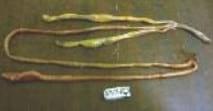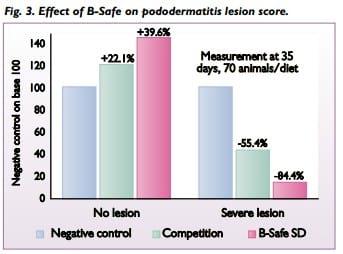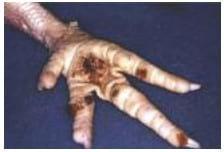poultry gut microflora
Understanding and managing poultry gut microflora safely
According to different authors, we only know 10-25% of total poultry gut microflora. Indeed all micro-organisms have not yet been identified by conventional methods. Thus, not neglecting traditional methods, DNA based approaches have been developed, in order to clarify the total profile of gut flora.
Many research teams are actually working on either qualitative (DNA fingerprinting methods: 16SrRNA gene target) or even quantitative methods (Fish, q PCR) to better type microflora in different parts of the poultry gut or to characterise changes in
poultry gut flora caused by different factors, such as the occurrence of pathogenic zoonotic bacteria, or the use of feed additives.
We know that poultry microflora is made up of approximately 30 different genus gathering not less than 600 species. Thus, when talking about the importance and influence of gut microflora, remember that the number of bacterial cells in the host is 10 times the eukaryote cell number in the bird’s body or that their genes number is 50-100 times higher than the total number of genes constituting the host!

Of course this ‘normal’ process may be influenced by numerous factors, such as environment (broilers on the floor will be more in contact with bacteria than broilers in a cage) and stress (heat, mycotoxins, coccidiosis, density, vaccination) that will reduce their defences.
Since bacterial species differ from each other according to their substrate preference and growth requirement, the chemical composition and structure of the digesta largely influences the species distribution in gut.
This ecosystem impacts the host in various ways. First on the physiology of the digestive tract by increasing intestinal length and improving gut wall thickness, microflora thus improves gut integrity. In fact, it produces fuel for gut wall enterocyte (volatile fatty acids) and favours mucus production.
On the other hand, they also produce beneficial metabolites such as vitamins. They also play the fundamental ‘barrier flora’, preventing pathogens from colonising the digestive tract.
In conclusion, the gut microflora profile, localisation and composition is influenced by many different factors in which diet composition seems to dominate and may influence the host in terms of gut tract physiology, immune system and health, and thus the economic performance of the flock


Neovia has been working for almost 10 years to develop B-Safe, a sustainable and reliable AGP substitute aiming at securing the digestive process, preventing any imbalance in the gut microflora. B-safe is based on an unique ion exchanged technology bringing to the product high antimicrobial potency against various pathogens.
Trial results
Many performance trials set up under challenging conditions (poor sanitary status environment, density, inoculation of pathogens) to mimic field conditions or also simply in real field conditions with high numbers of animals have demonstrated the reliable efficacy of B-Safe on growth rate (+3.2% on average) and on FCR (-3% on average).

Pododermatitis
More targeted trials have also demonstrated the potential of the product to reduce dysbacteriosis problems (bacteria excretion in faeces and pododermatitis lesions).
As an example, a trial was set up with a poultry integrator. Broilers from farms positive for campylobacter were brought to the R&D station to be fed with the control diet or the B-Safe diet for two weeks.
Evolution of the gut bacteria profile between the beginning and the end of the trial was individually evaluated for each animal by sampling individual faeces and microbial measurements.
A second trial followed by R&D in standard farm conditions confirmed the benefits of using B-Safe on pododermatitis incidence together with improvement of zootechnical performances (+2.7% ADG, -2.8% FCR).
B-Safe reduced the number of birds with severe lesions from 18% in the control group to less than 3% in the treated group (-84%).
In conclusion, gut management is of high importance to optimise physiological and economic performance. Among other things, nutrition and feed additives can play a strong role.
B-Safe is a promising feed additive to prevent dysbacteriosis, and consequently wet litter and pododermatitis, and to secure the digestive process to boost performances.
Interesting article about managing poultry gut microflora. Hope this product will be available here in philippines with affordable price.
To Leo Antony : Dysbacteriosis refers to an imbalance of the microbial flora. Within this article it is the gut microflora. As it is written, we don’t know the exact composition of this flora but, when some bacteria as Campylobacter or Clostridium increase in the digestive tract, there is a change in the flora balance and there is a risk of intestinal mucosa damages and intestinal motility changes. The results of this dysbacteriosis can be a lower nutrients absorption and thus lower performances and profitability.
Marie-Laurence Le Ray - B-SAFE product manager.
Interesting Article about managing poultry gut microflora safely. We hope to achive B-Safe promotion in GCC market next year.
A very interesting and enlightening article that highlights the importance of gut health in poultry. Many poultry people take poor gut health very lightly as a routine affair and do not realize the importance of doing something about it. Can I request the author to kindly throw some more light on what she calls calls 'DYSBACTREIOSIS' ?
Excellent article about managing poultry gut microflora safely! Thanks for sharing will be in touch. My number is +923008505212
I am conducting more than 20 trials of B-Safe in different cities of Pakistan. I have got three unofficial reports from the farmers and waiting for comprehensive report. How ever in preliminary report, effect of B-Safe so encouraging, it reduces the mortality, increases weight gain and decreases FCR.
On one broiler farm in Okara, its effect on Enteritis is astonishing, Farmer had three sheds, 30,000 each, he used B-safe on such farm, where he experienced Enteritis in every rearing, he told us, and in this shed, he got astonishing results against Enteritis.
B-Safe is a very good product in Pakistan market, where digestive tract originative problems are so many.
Good article about managing poultry gut microflora safely.
What is impact on immunity, any work please









.jpg&w=3840&q=75)







.jpg&w=3840&q=75)